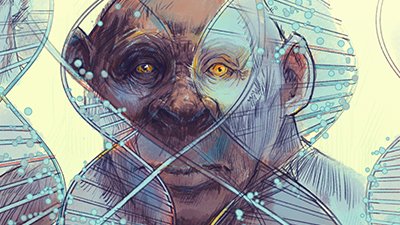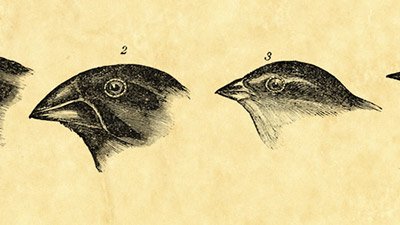
Proteins: Evidence For Evolution or Intelligent Design
ScienceDaily: “Evolution’s New Wrinkle: Proteins with ‘Cruise Control’ Provide New Perspective” Proteins that act like “adaptive machines”—are they evidence for evolution or intelligent design?
Princeton University researchers were conducting experiments on proteins that make up the electron transport chain, a “biomechanical network essential for metabolism.” The researchers discovered that during the experiments, the proteins “acted to correct any imbalance imposed on them through artificial mutations and restored the chain to working order.”
The proteins “acted to correct any imbalance imposed on them through artificial mutations and restored the chain to working order.”
More specifically, researchers at Princeton and elsewhere, including Duke University and the Massachusetts Institute of Technology, discovered that these proteins often seem to be in either the maximum or the minimum energy position—more often than could be accounted for by random chance, and consistent with systems designed for optimal management.
While this seems to be blaring evidence for the incredible design of life, the scientists —almost unbelievably—claim the research “answers an age-old question that has puzzled biologists since the time of Darwin: [h]ow can organisms be so exquisitely complex, if evolution is completely random, operating like a ‘blind watchmaker’?” At least, that’s according to researcher Raj Chakrabarti of Princeton’s department of chemistry. (We’ll note—as we have in the past with similar reports—that such evolutionary “puzzlement” never seems to be noted by evolutionists until it’s supposedly solved.) Chakrabarti continues, “Our new theory extends Darwin’s model, demonstrating how organisms can subtly direct aspects of their own evolution to create order out of randomness.”
Commenting on the research, which was published in Physical Review letters, coauthor Herschel Rabitz explains, “What we have found is that certain kinds of biological structures exist that are able to steer the process of evolution toward improved fitness. . . . The data just jumps off the page and implies we all have this wonderful piece of machinery inside that's responding optimally to evolutionary pressure.”
The researchers compare the mechanism to a car’s cruise control or a home’s thermostat in that it serves as a self-regulating device, “allowing them to fine-tune and control their subsequent evolution,” the press release notes. Of course, cruise control and thermostats are perfect examples of designed technology.
The evolutionary chutzpah becomes almost overwhelming toward the end of the press release, which states, “The scientists do not know how the cellular machinery guiding this process may have originated, but they emphatically said it does not buttress the case for intelligent design” (emphasis added).
Further comments by Chakrabarti complete the evolutionary overstating. “Biological change is always driven by random mutation and selection, but at certain pivotal junctures in evolutionary history, such random processes can create structures capable of steering subsequent evolution toward greater sophistication and complexity.”
Our first question is why the researchers claim their find could help evolution—how, as Chakrabarti put it, the protein pathway could “[steer] subsequent evolution toward greater sophistication and complexity.” After all, what the researchers found is the electron transport chain’s ability to maintain function within parameters, not to develop new capabilities; it’s not as if the electron transport chain evolved into a nuclear reactor while the researchers watched.
Once again, it comes down to presuppositions.
Our second question is, doesn’t this just reinforce the idea of amazing level of design in living cells? Quite contrary to showing how information could result from the lack of it (which is what evolutionists need to show, ultimately), this find indicates even a more sophisticated design, and thus demands even more strongly a designer. It’s as if someone were to discover that a computer had an incredible ability to self-repair. That wouldn’t prove the computer was able to “self-repair” itself into existence; it would instead prove the computer’s design was even more advanced (and impressive, we might add) than first thought!
Once again, it comes down to presuppositions. If you believe such complexity can evolve, then this can be a centerpiece of evidence of what evolution can do. If you believe in design, then this is yet another example of incredible engineering. But while it comes down to presuppositions, there’s still room for illogic, as the intelligent design blog Uncommon Descent points out. To paraphrase their paraphrase of the research, “This looks just like something engineers design. We have no explanation for how this could work if it were based on randomness. But this definitely proves evolution and disproves design.”
Alas, apparently it’s good enough science for the U.S. taxpayer-supported National Science Foundation.
For more information:
- Get Answers: Design Features, Information Theory, Mutations, Probabilities
Remember, if you see a news story that might merit some attention, let us know about it! (Note: if the story originates from the Associated Press, Fox News, MSNBC, the New York Times, or another major national media outlet, we will most likely have already heard about it.) And thanks to all of our readers who have submitted great news tips to us.
(Please note that links will take you directly to the source. Answers in Genesis is not responsible for content on the websites to which we refer. For more information, please see our Privacy Policy.)
Recommended Resources

Answers in Genesis is an apologetics ministry, dedicated to helping Christians defend their faith and proclaim the good news of Jesus Christ.
- Customer Service 800.778.3390
- Available Monday–Friday | 9 AM–5 PM ET
- © 2025 Answers in Genesis




